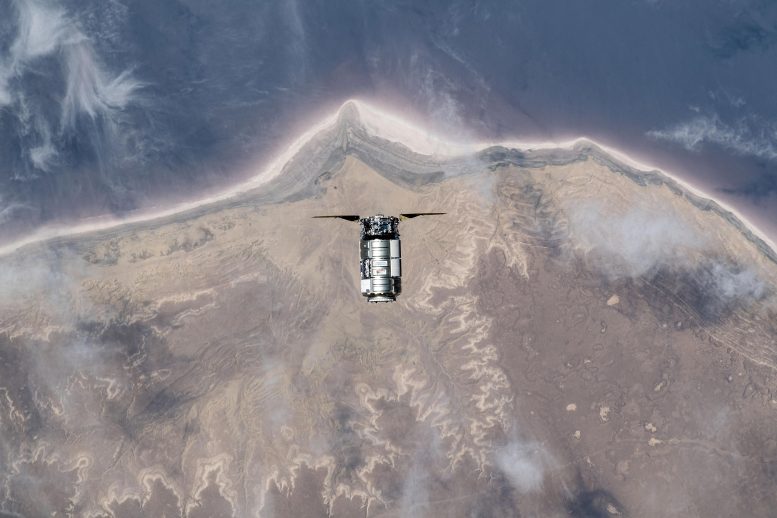Northrop Grumman’s Cygnus cargo craft is pictured moments away from being captured by the Canadarm2 robotic arm controlled by NASA astronaut and Expedition 69 Flight Engineer Woody Hoburg from inside the International Space Station on August 4, 2023. Credit: NASA
NASA, Northrop Grumman, and SpaceX are preparing for the 20th commercial resupply mission to the ISS on January 30, using Falcon 9 to deliver over 8,200 pounds of cargo, amid favorable weather forecasts.
Today, NASA, Northrop Grumman, and SpaceX confirmed joint teams are targeting 12:07 p.m. EST on Tuesday, January 30 for Falcon 9 to launch the 20th Northrop Grumman commercial resupply services mission to the International Space Station.
SpaceX’s Falcon 9 rocket and Northrop Grumman’s Cygnus resupply spacecraft will lift off from Space Launch Complex 40 at Cape Canaveral Space Force Station in Florida to deliver more than 8,200 pounds of science investigations, supplies, and equipment to the orbiting laboratory. Weather officials with Cape Canaveral Space Force Station’s 45th Weather Squadron are currently predicting a 95% chance of favorable weather conditions for launch. The primary weather concern for the launch area is the cumulus cloud rule.

Northrop Grumman’s Cygnus cargo craft is pictured from the International Space Station as it approaches while orbiting 261 miles above the coast of the Garabogazköl Basin in Turkmenistan on August 4, 2023. Credit: NASA
Northrop Grumman Cygnus Spacecraft
The Northrop Grumman Cygnus spacecraft is a key player in space resupply missions, particularly for the International Space Station (ISS). Developed and operated by Northrop Grumman, Cygnus is part of NASA’s Commercial Orbital Transportation Services (COTS) program, designed to enable private companies to deliver cargo to the ISS.
Cygnus consists of two primary components: the Service Module, which contains the spacecraft’s avionics, propulsion, and power systems, and the Pressurized Cargo Module, which carries the cargo. This module is manufactured by Thales Alenia Space, a notable player in aerospace technology.
Cygnus spacecraft are launched aboard rockets such as the Antares and Falcon 9, depending on the mission requirements. Once in orbit, Cygnus autonomously navigates to the ISS, where it is captured by the station’s robotic arm and berthed to a docking port.
The spacecraft is capable of delivering a wide range of cargo, including scientific research materials, crew supplies, hardware, and other essential items to support the ISS and its crew. After its mission is complete, Cygnus is loaded with waste material from the station and then unberthed. It eventually re-enters Earth’s atmosphere, where it safely burns up, disposing of the waste material.
Cygnus has been instrumental in enhancing our capabilities for space exploration and maintaining the ISS as a hub for scientific research and technological development. Each Cygnus mission represents a critical step in ongoing efforts to advance our presence in space.





